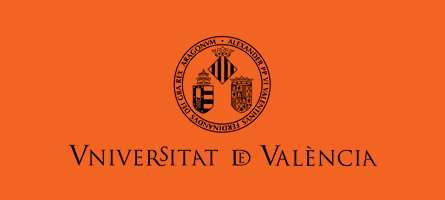The transparency of Popular Party and Ciudadanos on their websites. Analysis of the electoral campaigns of 2015 and 2016
DOI:
https://doi.org/10.7203/rd.v2i3.75Abstract
The digital society demands greater institutional and political transparency, inuenced by the openness and accessibility characteristics of the Internet. The election campaign is the time for political parties to show how they want to act in government. This research aims to analyze what the parties say about their commitment to transparency and how transparent they are, in fact, during the electoral campaign. Thus, it tries to measure the level of transparency of Partido Popular and Ciudadanos during the election campaigns of 2015 and 2016 for the General Elections. For this, a quantitative and semi- qualitative content analysis was approached from the project of Dader, Campos and Quintana (2011) on the transparency of the organization, the transparency of the campaign activity, the transparency of the participation with the citizens, Transparency of data and computer tools and the transparency portal. The results allow us to observe an improvement between 2015 and 2016, as well as the dierences between what they proclaim in their electoral programs and the reality of their portals of transparency.
References
Armstrong, E. (2005). “Integrity, transparency and accountability in public administration: Recent trends, regional and international developments and emerging issues”. United Nations, Department of Economic and Social Affairs, 1-10.
Boletín Oficial del Estado (2013) Ley de Transparencia, Acceso a la Información Pública y Buen Gobierno. Disponible en: http://www.boe.es/boe/dias/2013/12/10/pdfs/BOE-A-2013-12887.pdf (Consultado: 18 de octubre de 2016).
Bonsón, E., Torres, L., Rayo, S., & Flores, F. (2012). “Local e-government 2.0: Social media and corporate transparency in municipalities”. En Government Information Quarterly, vol. 29, pp 123–132
Caridad Sebastián, M., & Marínez Cadama, S. (2016). “Gobierno y Parlamento abierto: la participación ciudadana en el tratamiento y visualización de la información pública”. En Rev. Interam. Bibliot. Medellín (Colombia), Vol. 39, pp. 47–56.
Christensen, L. T., & Cheney, G. (2015). “Peering into Transparency: Challenging Ideals, Proxies, and Organizational Practices”. En Communication Theory, vol. 25, pp. 70–90. http://doi.org/10.1111/comt.12052
Dader, J. L., Campos-Domínguez, E., & Quintana Paz, N. (2011). “Las webs de los partidos en la campaña de 2011: Una panorámica cualitativa de su actividad y un análisis cuantitativo de su transparencia”. En: Crespo Martínez, I. (Dir.) Partidos, medios y electores en proceso de cambio: las elecciones generales españolas de 2011. Valencia : Tirant Humanidades, pp. 239-274.
Esteban, P. (2016) Transparencia Internacional baja el listón y regala un 10 al PSOE y a Ciudadanos. El Confidencial. Disponible en: http://www.elconfidencial.com/espana/2015-04-29/psoe-ciudadanos-informe-transparencia-internacional_785377/ (Consultado : 18 octubre 2016).
Gértrudix, Manuel; Gertrudis-Casado, María-Carmen; Álvarez-García, Sergio (2016). “Consumption of public institu- tions’ open data by Spanish citizens”. El profesional de la información, vol. 25, pp. 535-544.
Guillamón, M., Ríos, A., Gesuele, B., & Metallo, C. (2016). “Factors influencing social media use in local governments: The case of Italy and Spain”. En Government Information Quarterly, vol. 3, pp. 460-471.
Mateo, J. (2016). Los afiliados de Ciudadanos reciben un anónimo que pide más transparencia y democracia interna. El País. Disponible en: http://politica.elpais.com/politica/2016/05/12/actualidad/1463047590_406823.html (Consultado: 18 octubre 2016).
Matheus, R., Ribeiro, M. M., Vaz, J. C., & de Souza, C. A. (2010). “Using internet to promote the transparency and fight corruption: Latin American transparency portals”. Comunicación presentada en la IV International Conference on Theory and Practice of Electronic Governance, Beijing, China, 25-28 de octubre.
McDermott, P. (2010). “Building open government”. En Government Information Quarterly, vol. 27, pp. 401-413.
O'Reilly, T. (2007). “What is Web 2.0: Design patterns and business models for the next generation of software”. En Communications & strategies, vol. 65, pp.17- 37.
Obama, B. (2009) Memorandum Transparency and open government. Disponible en: https://www.whitehouse.gov/the_press_office/TransparencyandOpenGovernment (Consultado el 18 de octubre 2016).
Pineda Nebot, C., & Marques Ferreira, M. A. (2015). El proceso de datos abiertos en Brasil y España: Aspectos positivos y dificultades. En Cuadernos de Gobierno Y Administración Pública, vol. 2, pp. 33–55.
Ramírez-Alujas, Á. (2011). “Gobierno Abierto , Servicios Públicos 2.0 y Ciudadanía Digital: Notas para una nueva agenda de modernización de la gestión pública en Iberoamérica”, En GIGAPP Estudios Working Papers, vol. 9, pp. 1-24.
Stier, S. (2015). “Political determinants of e-government performance revisited: Comparing democracies and autocracies”. En Government Information Quarterly, vol 32, pp. 270–278.
Vázquez Sande, P. (2016): “Usos político-partidistas en cuentas de Twitter de administraciones públicas”. En Revista Latina de Comunicación Social, vol. 71, pp. 484-507.
Downloads
Published
Issue
Section
License
Author rights apply to contributors. The journal reserves the right to be the first to publish the submission, following the Creative Commons Attribution License that allows for others to share the publication and acknowledges its authorship and the original publication within this journal.
Everyone who sends a manuscript is explicitly accepting this publication and edition cession. In the same way, he/she is authorizing Dígitos to include his/her work in a journal’s issue for its distribution.







